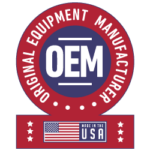The debate over Bodyweight Strength Training, versus the use of iron weights or machines, for athletes or general fitness, has come up repeatedly over the years. Most trainers want their athletes to have a well-rounded fitness program and use a variety of strength training techniques. They want to see an athlete use not just machines and weights, but bodyweight training along with road work for endurance. Most trainers now stress using strength building time as an important aspect of enhancing their endurance.
In my three decades of coaching and observing world-class athletes, it became obvious certain physical tenets could be found in winning players. Among these are speed, dexterity, reaction time, flexibility, endurance, and of course strength. The most successful athletes were those who exhibited all of the traits named above, not the strongest as defined by the ability to lift, pull, or push, the heaviest weight.
Recently I had dinner with a gentleman who has been training professional boxers for decades. The subject of Bodyweight Strength Training came up and he pulled out his phone and proceeded to show me photos of some of his fighters. A couple he pointed out as “never having used an iron weight or a machine in training.”
I was beyond impressed; the photos he showed me were men who were, in the common vernacular, “ripped”…and that was to put it lightly. We talked about their routines, their near-zero bodyweight indexes, and the number of fights and titles they had won.
He was a long-time adherent of the use of the classic bodyweight training exercises such as push-ups, pull-ups, dips, step-ups, and squats. He firmly believed a fighter who could do one hundred plus push-ups in two minutes would “beat the tar” out of a guy who could bench 400 pounds once. My own experience, in boxing, wrestling, and in Judo, told me he was very likely spot-on with this prognosis. In my youth I fought that type of body-builder more than once, in each of those sports, and never lost a match. On the other hand I lost plenty of matches to opponents who were quicker or who could outlast me.
I have also learned over the years, the hard way, that iron weights and machines can do damage to the body in the long run. That damage could have been avoided by the judicious use of a bodyweight fitness routine. The youthful use of excessively heavy weights has clearly created issues with joints, rotator cuffs, and some other important body parts. I’ve learned machines restrict motion, often causing you to move in unnatural ways, and can fail to work more than a limited set of muscles.
For the athlete or fitness buff the lure of getting stronger in a shorter time period is hard to resist. Having the right equipment to make bodyweight exercises more appealing is the key to facilitate a change in attitude and an acceptance of bodyweight workouts. Coaches and trainers want their athletes to be strong, grow in endurance, while reducing the risk of permanent joint damage. Those coaches have discovered the option of using training equipment with push-up, pull-up, and dip bars, that make use of the athlete’s body weight for resistance.
StayFit Bodyweight+ , an equipment line manufactured by Pacific Outdoor Products of Maple Valley, Washington, is making available what may be the best designed and built fitness stations for Bodyweight Strength Training on the market today. Schools, sports teams, military bases, correctional facilities, and park departments can choose from a selection of exercise stations. Those equipment options can be combined into a multi-activity fitness center or placed at intervals to create a fitness trail. Their equipment is tough enough for the biggest and baddest NFL lineman but is just as accessible and useful to youth and lighter athletes.
Whether you’re in charge of training athletes, or providing a non-injurious outdoor fitness facility for your city park, consider Bodyweight Strength Training as a smart alternative to help fill your needs.
Are you a trainer, coach, or athlete? Tell us what you think and about your experience?


